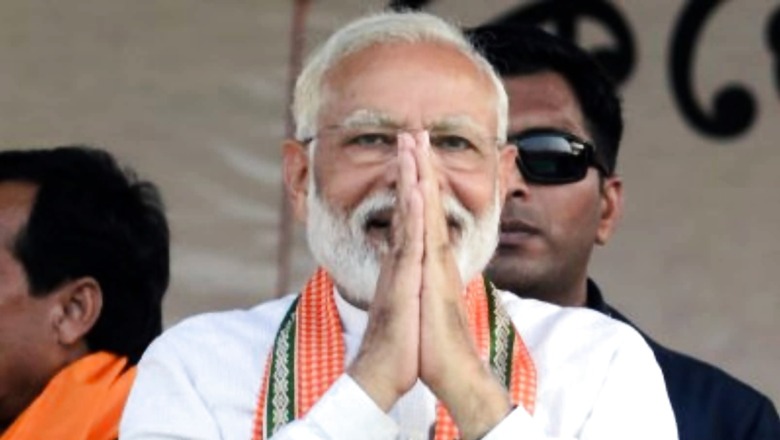
views
The Narendra Modi government is getting ready to make another big move in the healthcare sector -– creating a common platform to handle procurement of medicines for all central government agencies.
It includes the purchase of medicines for Central Government Health Scheme (CGHS) and other public sector undertakings such as Employees’ State Insurance Corporation (ESIC) hospitals, Jan Aushadhi scheme and All India Institute of Medical Sciences (AIIMS).
The idea is to drive down the prices of medicines, apart from maintaining the quality of drugs.
While the benefits of the concept are undisputed, given the scale and complexity of the exercise, a pilot-based approach and gradual scale-up will help in launching a well-oiled project.
In a discussion, Rishabh Bindlish, managing director and partner, BCG, who co-leads the healthcare practice for BCG in India, said it is well established that organized procurement of drugs leads to significant margin gains – of around more than 10% – benefits of which can ultimately be passed on to the patients.
However, implementation of such an initiative would require some careful considerations.
FEASIBLE DEMAND
Let us clarify this further. For instance, CGHS alone has about 1,200 hospitals, 200 empaneled diagnostic centers, 500 wellness centers, and more than 8,000 Jan Aushadhi stores.
Bindlish from BCG believes that to cater to demands across such a diverse and distributed ecosystem, the government would require robust planning and forecasting, which will need to be backed seamlessly through an enabling data infrastructure.
QUALITY OF MEDICINES
A robust technical qualification criterion for bidders and a foolproof testing protocol which ensures that every batch is released after testing from NABL-approved labs and conforming to the regulatory standards should be the foremost objective of the scheme.
The government must learn from the massive quality failures it witnessed during the drive to revamp Jan Aushadhi stores under the scheme formally known as Pradhan Mantri Bhartiya Janaushadhi Yojana (PM BJP).
Under the scheme, the government sells non-branded, generic drugs through retail pharmacy outlets called Jan Aushadhi Kendras. While the idea was to sell medicines at cheapest possible price, it ended up selling the cheapest quality, alongside.
However, as they fixed the quality issues with stringent quality checks, the revenue of the scheme sky-rocketed over 55 times in five years, to Rs 665 crore in 2020-21 fiscal from Rs 12 crore in 2016-17.
Quality of medicines must be treated as the heart of the project. Eventually, not just the revenue, the upcoming scheme must earn unclouded trust of stakeholders.
INTEREST OF SMALL, MEDIUM ENTERPRISES
If the policy requires one-point purchasing contracts, the previous system of multiple tendering authorities may be quashed.
But this is not simple, I am told.
Dheer Shah, chief financial officer at pharma firm BDR Pharmaceuticals, explained that “every tendering authority has its own criteria, such as, different set of rules, regulations and requirements”.
Now, if instead of multiple tenders, a common tender is floated, the suppliers have to address a larger volume, which may require more working capital and involvement of larger resources in places such as earnest money deposits (EMDs), which are normally a percentage of the bid value, than before.
It will act as a hurdle for medium- and small-scale industries. While the officials involved in the making of the scheme believe that a separate policy will be made to boost participation of MSMEs, such as exclusive contracts for buying multivitamins, the overall growth of Indian pharma market should be the focus.
TRANSPARENCY IN BIDDING
Apart from the tendering challenges, transparency in bidding will hold an important place in the success story. Leveraging a technology platform such as Government eMarketplace (GeM), would help consolidate demand, drive economies of scale and ensure transparency for all stakeholders, which, in turn, will drive adoption and usage of the platform.
The scheme should not become another place supporting a set of manufacturers and compromising on the quality of products.
Again, lessons from the Jan Aushadhi scheme can guide in designing the move better. For instance, under Jan Aushadhi, as per the audit report, officials allegedly bought six times the medicines they were supposed to, at a cost of Rs 47 crore and without any storage facility, as a favour to some private parties.
Further, of over 650 medicines in stock, 16 from three private suppliers contributed to 35% of the total stock. Two of these companies were not even WHO-GMP certified, compromising quality.
IN SHORT…
While the pharmaceuticals industry welcomes the move by calling it ‘progressive’, in reality, they may not be very happy as it will cut down the scope for them to negotiate attractive price quotations with individual ministries or government departments.
So far, it is understood that the upcoming portal will serve for procurements of the central government and not the state governments.
This needs to be studied carefully. They also need to check if the project would require an intersection with states for reaping larger benefits as public health and drugs procurement budgets are under the state’s purview. For successful implementation of the project, states may need to concur with the centre – something that could be interesting to watch as some non-BJP states are clearly not in love with the central government.
However, the government has made impossible possible with the massive upscaling of Jan Aushadhi Yojana.
Earlier, the plan to sell generic medicines replacing branded medicines – a move touted to be very close to PM Narendra Modi’s heart – looked over-ambitious and vague, apart from being complicated and time-seeking.
However, the ailing scheme was turned into a successful venture which, in the ministry’s corridors, is known as one of the top reasons behind the promotion of now union health minister Mansukh Mandaviya from a minister of state, chemicals and fertilisers.
As Jan Aushadhi’s acronym ‘PM BJP’ suggests, it ended up becoming Modi government’s one of the most saleable schemes in election campaigns.
The upcoming venture holds similar potential — from the greater good of reducing the price of medicines to boosting the resume of health minister, Mandaviya.
Read all the Latest News India and Breaking News here


















Comments
0 comment